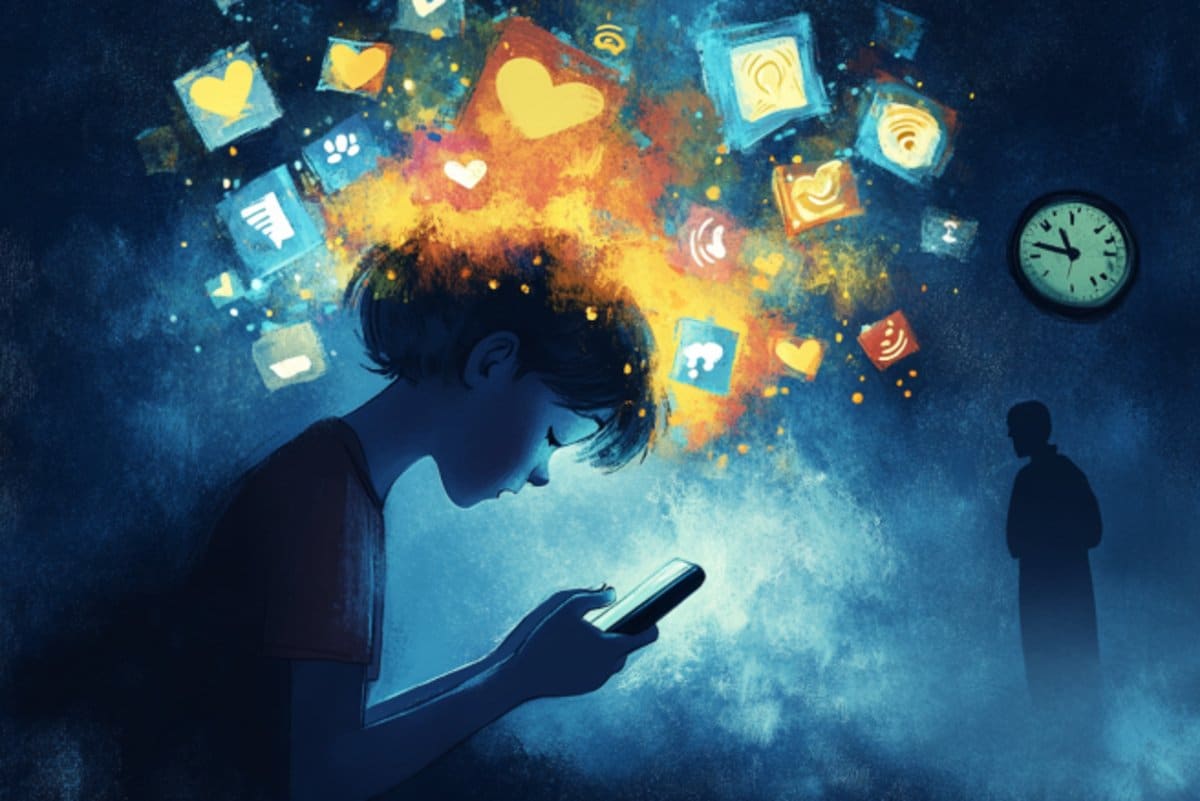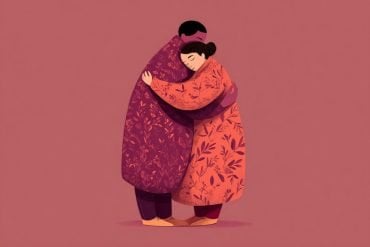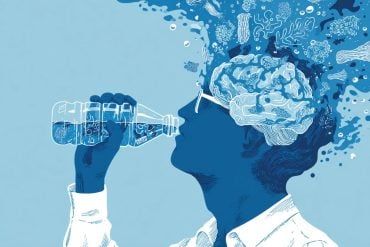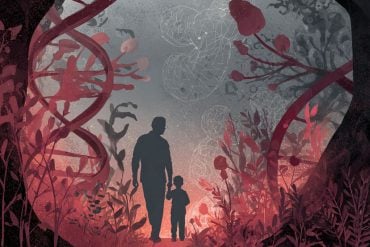Summary: A new study has found that as preteens increase their social media use, depressive symptoms also rise—but not the other way around. Researchers tracked nearly 12,000 youth over three years and discovered that increased screen time predicted later depression, while depressive symptoms did not predict more social media use.
Kids’ average daily social media use jumped from 7 to 73 minutes, and symptoms of depression rose by 35%. The findings suggest social media may play a causal role in the development of mental health issues, particularly when exposure includes risks like cyberbullying and poor sleep.
Key Facts:
- Direction of Risk: Social media use predicts depressive symptoms, not vice versa.
- Alarming Trends: Screen time rose tenfold; depressive symptoms increased 35%.
- Cyberbullying Link: Victims were over 2.5x more likely to report suicidal thoughts.
Source: UCSF
As rates of depression and suicide in youth spike, experts are asking whether social media makes kids depressed, or do depressed kids simply spend more time on social media?
A new study provides answers. Researchers at UC San Francisco found that as preteens used more social media, their depressive symptoms increased. Yet the reverse wasn’t true — a rise in depressive symptoms didn’t predict a later increase in social media use.
On average, kids’ social media use rose from seven to 73 minutes per day over the three years of the study and their depressive symptoms went up 35%.
The study, which was supported by grants from the National Institutes of Health (NIH), was published in JAMA Network Open.
The research team, led by Jason Nagata, MD, MSc, associate professor in UCSF’s Department of Pediatrics, examined data following nearly 12,000 kids aged 9 to 10 years and then three years later at 12 to 13.
The study is among the first to use within-person longitudinal data, meaning researchers could track changes over time in each child to accurately assess the link between social media and depression.
“There has been ongoing debate about whether social media contributes to depression or simply reflects underlying depressive symptoms,” said Nagata. “These findings provide evidence that social media may be contributing to the development of depressive symptoms.”
While it’s unclear why social media increases depressive symptoms, prior research points to risks such as cyberbullying and disrupted sleep. In fact, Nagata and team just published a separate study in The Lancet Regional Health – Americas looking at the same cohort of participants, focusing instead on the effects of cyberbullying.
The study found kids aged 11 to 12 years who were cyberbullied were 2.62 times more likely to report suicidal ideation or a suicide attempt one year later. Additionally, those kids were also 2.31 times more likely to experiment with a substance (4.65 times more likely with marijuana, 3.37 with nicotine, and 1.92 with alcohol) in the following year.
Increasingly, the youngest generations find themselves facing a catch-22, with growing evidence that social media is associated with depressive symptoms and risky behavior, yet it is also a primary area for them to connect and communicate with friends.
To address this reality, the American Academy of Pediatrics suggests using the tools in its Family Media Plan to create healthier digital habits for both kids and parents.
“As a father of two young kids, I know that simply telling children to ‘get off your phone’ doesn’t really work,” said Nagata.
“Parents can lead by example with open, nonjudgmental conversations about screen use. Setting screen-free times for the whole family, such as during meals or before bed, can help build healthier digital habits for everyone, including adults.”
Authors: UCSF authors are Jason M. Nagata, M.D., Christopher D. Otmar, Ph.D., Joan Shim, M.P.H., Priyadharshini Balasubramanian, M.P.H., Chloe M. Cheng, M.D., Elizabeth J. Li, M.P.H., Abubakr A.A. Al-Shoaibi, Ph.D., and Iris Y. Shao, Ph.D. For all authors, see the paper.
Funding: This work was supported by the National Institutes of Health (K08HL159350 and R01MH135492) and the Doris Duke Charitable Foundation (2022056). For all funding, see the paper.
Disclosures: Fiona C. Baker, PhD, reported receiving grants from the National Institutes of Health (NIH) during the conduct of the study. No other disclosures were reported.
About this depression and social media research news
Author: Jared Marsh
Source: UCSF
Contact: Jared Marsh – UCSF
Image: The image is credited to Neuroscience News
Original Research: Open access.
“Social Media Use and Depressive Symptoms During Early Adolescence” by Jason M. Nagata et al. JAMA Network Open
Abstract
Social Media Use and Depressive Symptoms During Early Adolescence
Importance
In 2023, the US Surgeon General issued the Advisory on Social Media and Youth Mental Health, identifying critical research gaps that preclude evidence-based guidance given that most studies of social media and mental health have been cross-sectional rather than longitudinal and have focused on young adults or older adolescents rather than on younger adolescents.
Objective
To evaluate longitudinal associations between social media use (time spent on social media) and depressive symptoms across 4 annual waves spanning a 3-year follow-up period from late childhood to early adolescence.
Design, Setting, and Participants
In this prospective cohort study using data from the Adolescent Brain Cognitive Development Study across 21 study sites from October 2016 to October 2018, children aged 9 to 10 years at baseline were assessed across 4 waves (baseline, year 1, year 2, and year 3), with year-3 follow-up through 2022. Sample sizes varied across waves and measures due to attrition and missing data. Analyses retained all available data at each wave. Data were analyzed from January 2024 to March 2025.
Exposures
Self-reported time spent on social media at baseline to 3-year follow-up.
Main Outcomes and Measures
Reciprocal associations between social media use and depressive symptoms (Child Behavior Checklist) at baseline and at 1, 2, and 3 years of follow-up were assessed using longitudinal, cross-lagged structural equation panel models. Covariates included sex, race and ethnicity, household income, and parental educational level.
Results
At baseline, the sample included 11 876 participants (mean [SD] age, 9.9 [0.6] years), of whom 6196 (52.2%) were male. After adjusting for stable between-person differences and covariates, within-person increases in social media use above the person-level mean were associated with elevated depressive symptoms from year 1 to year 2 (β, 0.07; 95% CI, 0.01-0.12; P = .01) and from year 2 to year 3 (β, 0.09; 95% CI, 0.04-0.14; P < .001), whereas depressive symptoms were not associated with subsequent social media use at any interval.
The final random-intercept cross-lagged panel model demonstrated a good fit (comparative fit index, 0.977; Tucker-Lewis index, 0.968; root mean square error of approximation, 0.031 [90% CI, 0.029-0.033]). Between-person differences in social media use were not associated with depressive symptoms (β, −0.01; 95% CI, −0.04 to 0.02; P = .46) after accounting for demographic and family-level factors.
Conclusions and Relevance
In this cohort study of 11 876 children and adolescents, reporting higher than person-level mean social media use in years 1 and 2 after baseline was associated with greater depressive symptoms in the subsequent year. The findings suggest that clinicians should provide anticipatory guidance regarding social media use for young adolescents and their parents.








